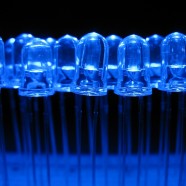Can Bluish Light Help Alzheimer’s Patients?
This is just one of many fascinating questions being addressed at Rennselaer Polytechnic Institute’s Lighting Research Center. It’s one of a growing number of similar ongoing studies around the world that are exploring the links between lighting and human health.
This latest study in particular focuses on how light affects the body’s circadian system, which governs sleep and wake phases. The LRC’s Mariana Figueiro recently discussed the project on NPR Radio.
The generally held theory is that bright white light with a bluish tinge is more stimulating, mimicking daylight conditions. Warmer, golden-tinged light, on the other hand, is more calming and prepares us for bed.
Working with a geriatric psychiatrist, the researchers used this theory in an attempt to help sleep-deprived Alzheimer’s patients at New York’s Albany County Nursing Home. They fitted a tabletop with a flat TV screen emitting bright bluish light, hoping to simulate the effects of prolonged daylight exposure. This produced positive results, as patients spending significant time at the table are now back to regular sleep patterns, with an accompanying improvement in mood and behavior.
On balance, light therapy experiments such as these are showing great promise for all sorts of human health concerns. The results will only improve as we move toward improved lighting technology and increased understanding of how it affects the human body.











